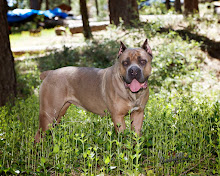Cane Corso owners will be familiar with their unique appearance, athleticism and reputation as great family dogs. You might not have experienced their stubbornness or willfulness unless you were raised with them. You may struggle to get your dog to follow you if you don't have strong leadership skills. It is important to train your Cane Corso. You might end up taking your dog for a walk if he isn't properly leash trained.
Dogs of this breed need to be exercised every day. It is important that your dog is able to walk unassisted when you go out. You'll have a great companion to walk with and a foundation for trust for many years.
Definition of Tasks
Your relationship with your dog should establish you as the leader of the pack from the beginning. If your dog sees you as the boss, it will be more willing to follow your orders. However, if he does not know that you are the boss, he will happily take the lead. It is important to leash train your Cane Corso.
You must set boundaries for him and insist that he adheres to them. He's a big, happy, playful dog with adorable paws and melty eyes. It's easy to let him do little things and not give any thought to them. He can push the boundaries and cause bigger problems. This bond can be established by spending time making sure your dog follows your lead as per Cane Corso Breeders.
Getting Started
Start by rewarding your dog for good behavior and using positive reinforcement. Do not hit or threaten your dog. You'll need some items once you are ready.
- Strong collar or harness
- Medium-length leash
- He loves tasty treats
- No exceptions policy - Your dog must be with you at all costs
- It is a quiet area with few distractions
The Follow the Leader Method
Wear a Collar or Harness
Your dog needs a well-fitted collar or harness. Make sure your puppy is not outgrowing the collar or harness.
Take the Leash
You are the leader the moment you put the leash on. You choose where and when you go. This can be done in your own home. You can also start the session outside by leading him to a place to relieve himself.
Take a Few Steps to Stop and Walk a Little
Take two to three steps, then stop. Your dog should be right next to you or behind your body. Do not let your dog pull on the leash or stop directly in front of you. For stopping in the right place, give him a treat. Turn around and change your direction if he approaches you.
Walking and Stopping is a Good Habits to Develop
Continue practicing, stopping at longer, more unpredictable times until he is looking at you constantly to see what's coming next. Don't allow him to touch or smell you if you are outside. To draw his attention back, you can either say "no" or make an audible sound.
Change Direction
You can now make a sudden change of direction from time to time. You can reward him with a treat if he is following your lead. If he does not and the leash becomes tight, you can say "no" to get his attention.
Practice Makes Perfect
You may walk a block for the first few weeks. It is important that you insist on him following your lead. He will respect you and give you his attention if your firm.
Keep Him on His Toes
Keep challenging him to improve his ability to stay by your side and heel beside you. You can stop him from focusing on something else if he does. Make him engage on your walks.
The Stop and Go Method
Secure the Leash
This is a great method for young dogs that don't have enough muscle mass to pull you off of your feet. Once you're ready, let the dog go inside the house. Do not let the dog run through the front door. Wait until you are ready.
Let him take a break
To relieve yourself, take him to a tree. He will only be allowed to use this area during the walk. No marking is allowed.
Begin to walk
Once he is ready, you can start walking down the street.
When you feel tension, stop.
Stop if he comes ahead of you and puts tension on the leash. Don't move.
The Leash can be relaxed
You can encourage him to look back at you, or take the leash off. He might respond by looking at you or making a sound.
Move forward
As a reward, he should let go of the tension.
Keep Practicing
Stop immediately if you feel the tension in the leash. You should not move until the dog releases tension or comes back. He should be taught that walking on a loose leash is fun, and pulling means he doesn’t have any fun.










0 Comments